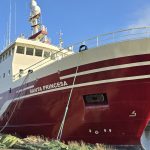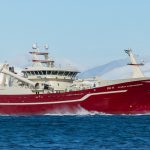Mindanao exports of seaweed may have doubled this year, but the region can’t afford to slacken its efforts to ensure the long-term competitiveness of the seaweed sector, say industry leaders.
In January to October 2008, exports of processed seaweed from this port city reached 5,085 metric tons, or MT valued at US$12.6 million, a 92-percent increase in volume and 114-percent incrase in value over exports for the same period in 2007.
Shortages of raw material and production surges in industries which use processed seaweed had driven up the price of eucheuma seaweed, which peaked at US$2,900 per MT in September 2008. The price has since dropped sharply, following the global financial downturn.
To weather the volatile market, the Mindanao seaweed sector needs to ensure adequate yield, develop more cost-effective farming technologies and increase investment to ensure the sustainability of the industry, according to USAID’s Growth with Equity in Mindanao (GEM) program, in a recent meeting with industry leaders in Zamboanga City.
Eucheuma and kappaphycus varieties of seaweed grown in the Philippines are used for the production of carrageenan, a thickening and stabilizing agent used worldwide in many processed foods and in products such as toothpaste, shampoo, paints, and pharmaceuticals.
The Philippines produces most of the world’s carrageenan in 14 processing plants located in Cebu, Southern Luzon, and Zamboanga. The top regional supplier of raw material for these plants is Mindanao, which produces 75 percent of the country’s eucheuma and kappaphycus seaweed, mostly in the Zamboanga peninsula and the Sulu archipelago.
The country’s processing plants alone need a minimum of 134,000 MT annually of raw dried seaweed, but total Philippine seaweed output decreased from 95,600 MT in 2004 to 74,650 MT in 2007, due to weather conditions, rising energy and transport costs, and other factors.
"If the carrageenan processors can’t depend on a steady supply of raw material produced locally, they may relocate to other countries," said Hdji. Adam Omar, chairman of the Western Mindanao Seaweed Industry Development Foundation.
Omar and other traders noted, however, that seaweed production along the Zamboanga peninsula and the Sulu archipelago had been particularly robust throughout 2008.
Omar said this was due to the propagation of high-yield, fast-growing seaweed cultivars distributed in late 2007 from nurseries established through partnerships between USAID’s Growth with Equity in Mindanao (GEM) Program, Mindanao State University-Tawi-Tawi, Zamboanga State College of Science and Technology, Kasanyangan Nursery and Seaweed Enterprise, and the International Finance Corporation.
Mindanao’s growers face competition from neighboring Indonesia, which produced 100,000 metric tons of seaweed in 2008, and has the advantage of larger growing areas and lower production costs.
Several carrageenan processors have increased their imports of seaweed from Indonesia, Omar said.
Seaweed farming is an important source of livelihood for western Mindanao, which has some of the country’s poorest provinces









